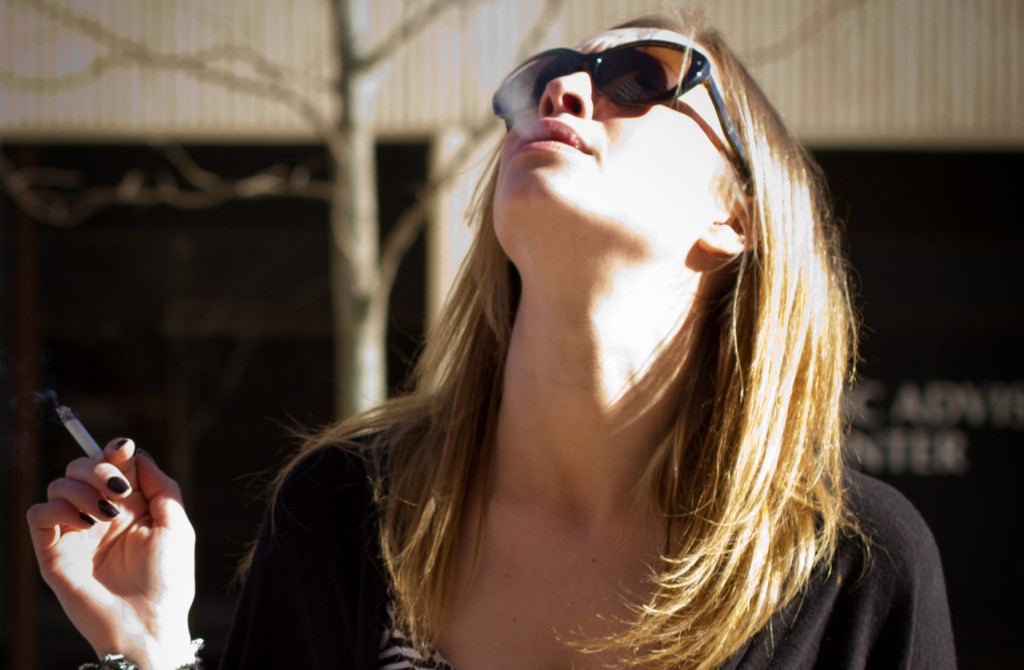

Student Association (SA) President Terrell Coakley is currently starting discussons about an issue concerning some students, faculty and staff: cigarette smoking on campus.
“I saw several students, at least 10, who were concerned about seeing littering from smoke butts on campus everywhere,” Coakley said. “Simultaneously I heard concerns that people weren’t following the 50-foot rule.”
According to the 1240 Workplace Smoking Policy, “Smoking is prohibited out of doors in the following areas: a. within 50 feet of building entrances and open windows, b. in all exterior stairwells and c. any building roofs.”
Although the 50-foot smoking policy is enforced by the college, Coakley said many students do not follow the rule and it has become a problem for non-smokers.
“I think one of the major problems is that students smoke right in front of Humanities before class, but if you follow the 50-foot rule, you go closer to Wooster or Old Main. There’s no where you can really go,” Coakley said. “It’s inconvenient for people who smoke but it’s also inconvenient for people who don’t want to be near smoking.”
Coakley presented the students’ concerns to President Donald Christian’s cabinet. Although nothing is set in stone and everything is still in the preliminary planning process, Coakley and the cabinet are working on implementing smoke-free zones on campus.
Director of Environmental Health and Safety Mike Malloy said there are three ways to approach the issue at hand. One would be to improve the present plan by having more smoking-butt containers.
“The main complaint I’ve gotten from students, faculty, staff is that there aren’t enough butt containers,” Malloy said.
Malloy said the current containers have a plastic neck and can melt and burn from the cigarettes. He said they will have “newer and better ones put up on the concourse.”
Second, Malloy said they could have “designated smoking areas,” like gazebos throughout the campus. The third would be to have an entirely smoke-free campus. A few SUNY schools have already started to implement a smoke-free campus, including SUNY Canton and SUNY Cortland.
Malloy said they will probably form a tobacco committee with “smokers and non-smokers…to come up with a solution.”
Additionally, Malloy said they will add more signs around campus to enforce the 50-foot rule, especially near places like the Atrium. Since the Atrium is a roof, smoking is prohibited. The signs will be donated by the Ulster County Anti-Tobacco Coalition.
Malloy also said the Employee Assistance Program (EAP) is looking to offer smoking cessation programs and Student Health Services offers counseling, nicotine patches and gum.
Cath Cole, a third-year sociology major, said she thinks specified smoking areas on-campus would be a good idea and “help to satisfy both the smokers and the non-smokers on campus.”
“I don’t think it would be fair to completely ban smoking from the campus considering a vast majority of both students and faculty are active smokers,” said Cole. “I would be completely on board for a gazebo, seeing as how one of the biggest struggles for smokers – especially in a winter in New Paltz – is hiding from the rain and snow.
Clarie Slow, a non-smoker and a fourth-year organizational communication major, said she understands that smokers could be upset with a smoke-free campus.
“I think this is going to be an ongoing issue to try and find a happy medium for both sides,” said Slow. “In terms of health issues, though, I think that we should become a smoke-free campus because we have the information on how bad smoking is for our health, why not promote that? Gazebos are definitely a good idea but it’s going to create a strong divide between smokers and non-smokers.”

When I was in the military DOD regs required 1 smoking room per floor per building (inside). That allowed the smokers to stay warm and dry in bad weather, prevented 2nd hand smoke exposure to non-smokers and reduced time needed for smoking breaks (increasing productivity).
When I worked for the USPS in Manhattan (years later) smokers lit-up EVERYWHERE – often leading to fires (due to high levels of paper dust) and destroyed mail. The USPS sorting building in Phoenix though had designated smoking break areas and a smoker’s room in the cafeteria (each with large electric air purifiers). THEY had no fires and people got along fine.
Just my experience.